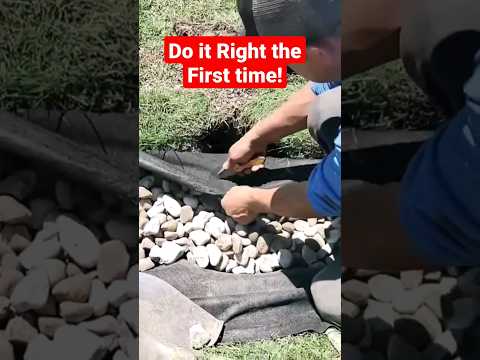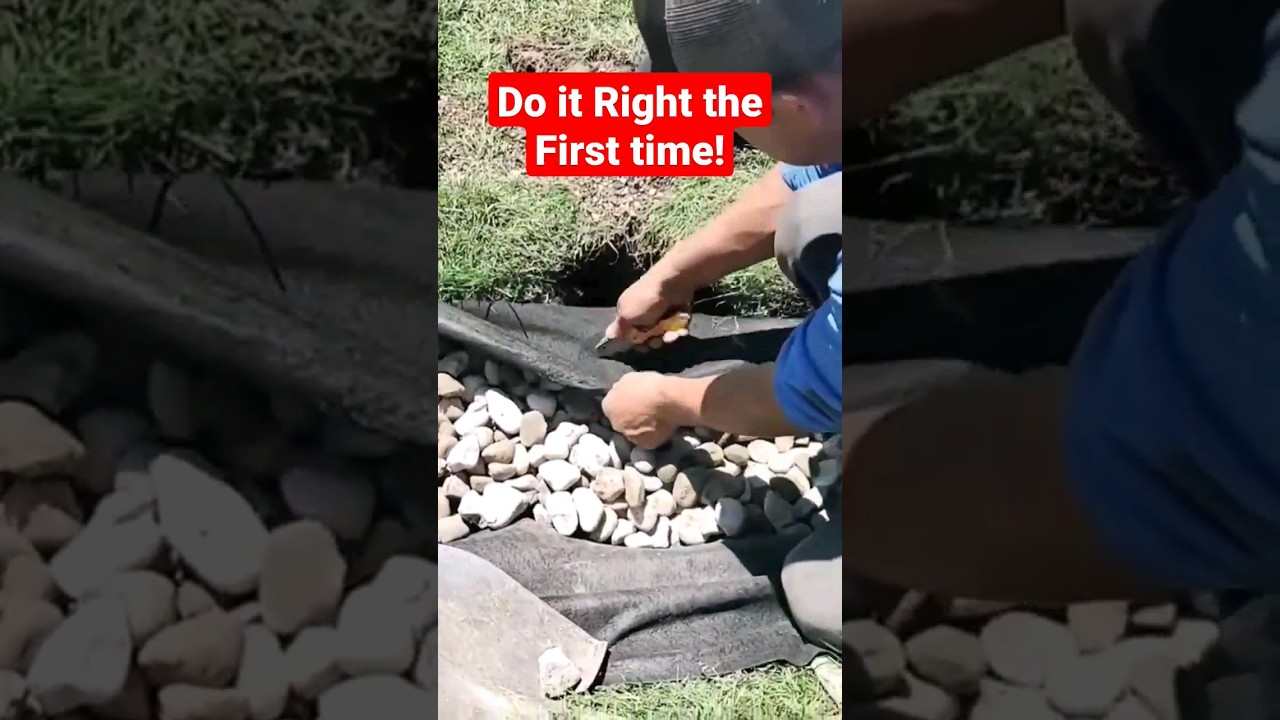Fabric for French Drain: Discover the secret to a highly efficient and long-lasting drainage system with our exceptional fabric for French drains. Designed to revolutionize the way you manage water runoff, this high-quality fabric offers unparalleled performance and durability. Say goodbye to clogged drains and waterlogged landscapes with our premium fabric that prevents soil erosion, filters out sediment, and ensures optimal water flow. Its innovative design allows for maximum water penetration while keeping unwanted debris at bay, saving you time and money on maintenance. Crafted from reliable materials, our fabric is built to withstand the harshest conditions, providing you with peace of mind and a worry-free drainage solution for years to come. Whether you are a homeowner seeking to protect your property or a professional landscaper looking for a reliable solution, our fabric for French drains is the ultimate choice. Experience the difference in drainage performance and efficiency with our premium, innovative, and reliable fabric for French drains today.

The Importance of Fabric for French Drain Systems
Fabric is an essential component of a French drain system, playing a crucial role in its effectiveness and longevity. This article will explore the significance of fabric in French drains, its benefits, different types available, installation process, and maintenance tips.
1. Enhancing Drainage Efficiency
The primary purpose of fabric in a French drain system is to prevent soil particles from infiltrating the drain pipe. By acting as a filter, the fabric allows water to flow freely through the drain while preventing clogging caused by debris and sediment. This allows for improved drainage efficiency, ensuring that excess water is efficiently redirected away from your property.
Without the proper fabric, the drain pipe can quickly become obstructed, rendering the French drain system ineffective. The accumulation of soil particles can lead to clogs, causing water to pool around your property’s foundation or other undesired areas. Therefore, using fabric in your French drain system is crucial to maintain its functionality.
2. Preventing Pipe Damage
Another significant benefit of using fabric in a French drain system is preventing pipe damage. Over time, the constant flow of water through the drain pipe can cause erosion and wear. Without fabric acting as a barrier, the soil particles can accelerate this process, leading to potential pipe damage.
The fabric acts as a protective layer around the drain pipe, reducing the risk of erosion and prolonging the lifespan of the system. By preventing soil particles from coming into direct contact with the pipe, fabric helps maintain the structural integrity of the drain system, ensuring its long-term functionality.
3. Types of Fabric for French Drains
When it comes to choosing fabric for your French drain system, it’s essential to consider the specific requirements of your project. There are different types of fabric available, each with its unique characteristics and suitability for various applications.
Non-woven geotextile fabric is a popular choice for French drains. It is made from synthetic fibers, providing excellent filtration capabilities while remaining durable and resistant to decay. Woven geotextile fabric is another option, known for its high strength and filtration efficiency. It is suitable for areas with heavy soil conditions.
It is crucial to select a fabric that matches the drainage needs of your project. Consulting with a professional or researching the specific requirements of your area can help you make an informed decision.
4. Installation Process
The installation of fabric in a French drain system is a relatively straightforward process that can be completed by following a few essential steps.
First, excavate the trench where the drain pipe will be placed. Ensure that the trench is sloped to facilitate proper water flow. Once the trench is prepared, place a layer of fabric on the bottom and sides of the trench, extending it beyond the edges.
Next, carefully lay the drain pipe on top of the fabric, ensuring it is positioned correctly. Cover the pipe with additional fabric, folding the excess over the top. Finally, backfill the trench with gravel, leaving a few inches of space at the top to allow for proper drainage.
It is crucial to follow the manufacturer’s guidelines and best practices during the installation process to ensure the fabric is correctly positioned and secured. This will maximize the effectiveness of your French drain system.
5. Maintenance Tips
Proper maintenance is essential to ensure the longevity and effectiveness of your French drain system. Regular inspection and cleaning can prevent clogs and address any issues before they escalate.
Inspect the drain system periodically to identify any signs of clogging or damage. Remove any debris or sediment that may have accumulated on the fabric or inside the drain pipe. Additionally, ensure that the fabric is intact and in good condition, as any tears or holes can compromise its functionality.
If you notice any significant clogs or damage, it is recommended to seek professional assistance to address the issue promptly. Regular maintenance will help your French drain system perform optimally, protecting your property from water damage and preserving its structural integrity.
Conclusion
Fabric is a critical component of a French drain system, enhancing its drainage efficiency while preventing pipe damage. By acting as a filter, fabric allows water to flow freely while preventing clogs caused by soil particles. Choosing the appropriate fabric, following proper installation procedures, and conducting regular maintenance will ensure the long-term effectiveness of your French drain system.
Investing in the proper fabric for your French drain system is crucial to protect your property from potential water damage and maintain a healthy foundation. By understanding the importance of fabric and following the recommended guidelines, you can ensure the longevity and functionality of your French drain system for years to come.
Installing French Drain Fabric: A Foolproof Guide to Get it Right the First Time!
Video Source : FRENCH DRAIN MAN
Fabric for French Drain
- Non-Woven Geotextile Fabric
- Woven Geotextile Fabric
- Filter Fabric
- Drainage Fabric
- Landscaping Fabric
Fabric for French Drain
| Brand | Description | Material | Size | Price |
|---|---|---|---|---|
| Brand A | High-quality fabric designed for optimal water filtration in French drains. | Non-woven polypropylene | 4 feet x 100 feet | $150 |
| Brand B | Engineered with superior strength to resist tearing and clogging, ensuring long-lasting performance. | Woven geotextile fabric | 6 feet x 150 feet | $250 |
| Brand C | Specifically designed for heavy-duty applications, providing exceptional filtration and soil retention. | Non-woven polyester | 3 feet x 50 feet | $100 |
When it comes to fabric selection for French drains, choosing the right one is crucial for ensuring effective water drainage and soil stabilization. The table above showcases some top-quality fabric options available in the market.
Brand A offers a non-woven polypropylene fabric, which excels in water filtration. With a size of 4 feet x 100 feet, it provides ample coverage for most French drain installations. Priced at $150, it offers a great balance between performance and affordability.
For those seeking superior strength and durability, Brand B’s woven geotextile fabric is an excellent choice. With dimensions of 6 feet x 150 feet, it offers extended coverage and exceptional tear resistance. Although priced at $250, its long-lasting performance justifies the investment for more demanding projects.
Brand C specializes in heavy-duty applications, providing a non-woven polyester fabric that excels in filtration and soil retention. With a size of 3 feet x 50 feet, it is ideal for smaller French drain installations. Priced at $100, it offers a cost-effective solution without compromising on quality.
Remember, selecting the right fabric for your French drain is essential to ensure optimal water flow, prevent clogging, and maintain the longevity of your drainage system. Consider your specific needs and project requirements when making your choice.

